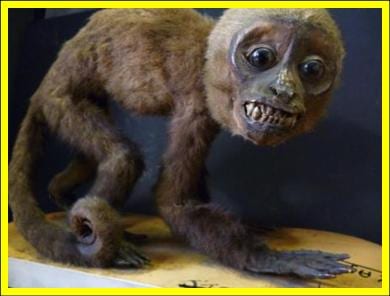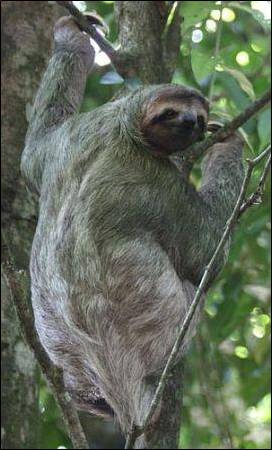Specimen of the Week: Week Eighty-Eight
By Emma-Louise Nicholls, on 17 June 2013
 I can’t believe DC Comics killed off Catwoman. WHAT is that about? I guess there may be a sequel (or eight), but the picture of her demise made it look pretty definite. It is sad times in the world of action heroes. You know what kind of animal I think would make a great superhero? The Aye-Aye. It can bite through steal, has super amazing hearing, and its camouflage skills are a conservationists worst nightmare. You know what kind of animal probably wouldn’t make a great superhero? This week’s Specimen of the Week is…
I can’t believe DC Comics killed off Catwoman. WHAT is that about? I guess there may be a sequel (or eight), but the picture of her demise made it look pretty definite. It is sad times in the world of action heroes. You know what kind of animal I think would make a great superhero? The Aye-Aye. It can bite through steal, has super amazing hearing, and its camouflage skills are a conservationists worst nightmare. You know what kind of animal probably wouldn’t make a great superhero? This week’s Specimen of the Week is…
**The pale-throated three-toed sloth**
1) There are two genera of sloth; the three-toed and the two-toed. When deciding to which you belong, it is important to differentiate between one’s hands and one’s feet, and then either get them exactly wrong, or else completely ignore the common name for both sloth genera. You see, both the three-toed sloth and the two-toed sloth have precisely three toes. What our esteemed gentleman (probably) natural historian ancestors-along-the-professional-colleague-line meant to say by ‘toe’ was ‘finger’. If you replace toe with finger in the common names two-toed sloth and three-toed sloth, it would be much more descriptively accurate. Of course, it does give the newly named ‘two-fingered sloth’ a potentially bad reputation.
2) The pale-throated three-toed sloth is endemic to South America where it will spend the majority of its life hanging upside down from tree branches in the rainforest. Each of the two fingers and three toes sport long, curved claws on the hands and feet which are not only very strong but also have the ability to lock in such a way that the sloth can hang upside down and completely relax. They even sleep like this. True story. These humongous claws also provide the sloth with one of their methods of self-defence.
3) Our skeleton (I’m going to shorten the common name to 3-toed sloth) dates back to when everything in life was bi-colour. This black and white photograph was taken of the Museum sometime in the 1880s, and our sloth skeleton can be clearly seen at the front, on the right.
4) Although the hair of the 3-toed sloth is grey-brown, individuals of this species frequently appear grey-green in colour. The reason is, (you’ll like this) the sloth’s lack of speed in movement allows for tiny camouflaging algae to grow all over their fur. As if the plants of the forest itself were trying to claim all lifeforms as their own. Another fun fact about sloths is that, unlike other mammals, their hair grows ‘backwards’ from the extremities down towards the body. This is to protect their skin from the elements whilst hanging upside-down from the branches.
5) Sad story time. Get the hot chocolate, marshmallows and blanket. If you have a rocking chair, I’d employ that too. In areas of their native lands where indigenous people eat bushmeat (no, it’s not all about gorillas), they will shoot a number of different species. Though not a prominent part of their diet, if a sloth is seen, it has a high chance of being shot. The sad part is that, remember those epic lockable claws we were so impressed by in point 2? Well, a sleeping sloth isn’t all that different to a dead sloth in terms of locked joints and so, kill it they may, but the sloth will not fall down. Not for a few days anyway, by which time the poor hungry hunters have moved on. So, the sloths die literally for no reason. I should have put tissues on my list of things to get, sorry about that.
Emma-Louise Nicholls is the Museum Assistant at the Grant Museum of Zoology
One Response to “Specimen of the Week: Week Eighty-Eight”
- 1
 Close
Close





[…] know what I’m referring to, you clearly- poor thing- missed out on last week’s Specimen of the Week. The species that features in this week’s edition is dear to my heart, having had a special […]